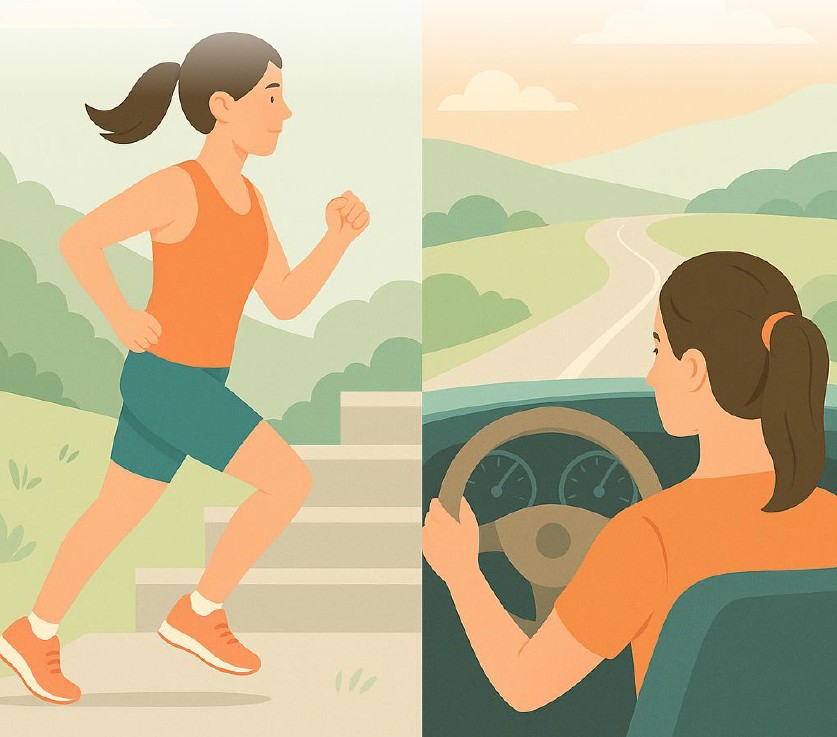
The scope of this thesis is to investigate the impact of physical fitness on road safety and driving behavior in a rural road environment, using a driving simulator. The experimental procedure involved 46 participants aged 19–27, who were evaluated in terms of their cardiorespiratory fitness through the Maximal Oxygen Uptake index (VO₂max). VO₂max was calculated based on heart rate (BPM – Beats Per Minute) after recovery from a short physical activity and then were categorized into two fitness groups: high fitness and low fitness, based on established VO₂max classification thresholds. Simultaneously, participants completed a related questionnaire. The data was analyzed using linear and logistic regression models. Results showed that high-fitness drivers demonstrated longer reaction times, greater variability in headway distance, higher average speeds, and, conversely, a lower probability of road accident involvement. Overall, higher physical fitness appears to be associated with more stable and controlled driving behavior, which, despite the increased reaction time, may contribute to reduced accident risk through improved decision-making.
| ID | ad176 |
| Presentation | |
| Full Text | |
| Tags |













